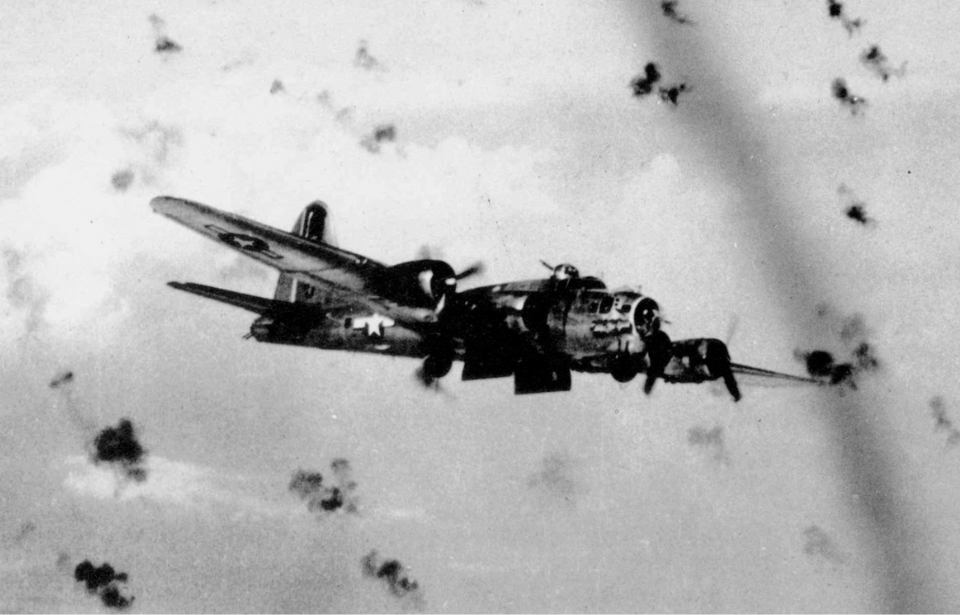On November 29, 1943, Eugene Paul Moran was manning the tail gun of a Boeing B-17 Flying Fortress during a bombing mission over Germany when disaster struck. Enemy fire tore into the aircraft, sending it crashing down in flames—a death sentence for most of its crew, especially those stationed in the exposed tail section. But somehow, Moran survived.
His escape from near-certain death defied logic. The tail gunner’s position was notoriously perilous, offering little protection in the event of an attack or crash. Yet Moran lived to tell the tale—a quiet hero who endured the unthinkable and walked away from one of the war’s deadliest moments.
Enlisting in the US Army Air Forces (USAAF)

Eugene Moran, born on July 17, 1924, in Wisconsin, grew up working on his family’s farm near Soldiers Grove. When World War II began, instead of continuing his farm work, he answered the call to serve his country overseas, in response to the Japanese attack on Pearl Harbor. Motivated by these events, he enlisted in the US Army Air Forces (USAAF).
Like many of his peers, Moran enlisted at the age of 18 in October 1942. Following his training, he was assigned to the 96th Bombardment Group, 339th Bombardment Squadron, Eighth Air Force.
Eugene Moran enters the fight
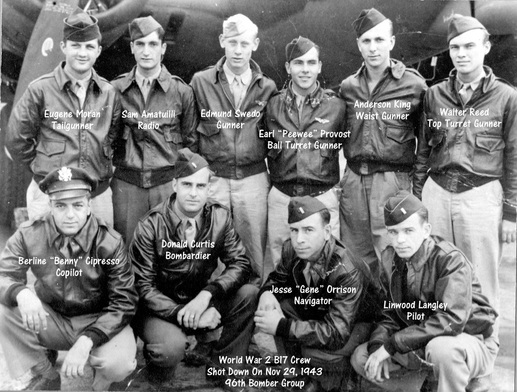
Now in the fight, Eugene Moran became a tail gunner aboard the B-17 Flying Fortress Rikki Tikki Tavi, after the mongoose in the Rudyard Kipling novel, The Jungle Book. He, along with the nine crewmen, were stationed at RAF Snetterton Heath, tasked with flying daytime bombing runs over Germany.
Moran and the rest of Rikki Tikki Tavi‘s crew had only completed four missions when disaster struck.
Disaster strikes the Boeing B-17 Flying Fortress Rikki Tikki Tavi
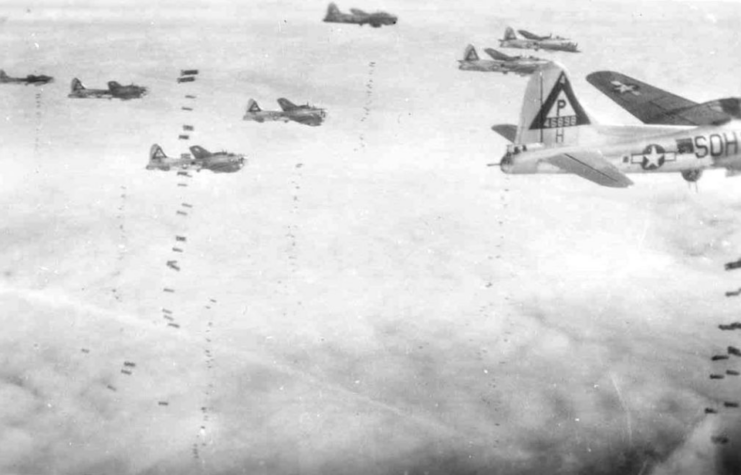
On November 29, 1943, Rikki Tikki Tavi joined other B-17s of the Eighth Air Force on a mission targeting Bremen, Germany. Following the bombing run over the city, Rikki Tikki Tavi fell behind the formation, drawing the full attention of the German defenses.
The B-17 sustained severe damage from both aerial and ground attacks. Eight crew members were killed, leaving only Eugene Moran and the navigator as the sole survivors. The navigator, stationed in the forward section, successfully parachuted to safety, while Moran remained trapped in the tail section.
Things go from bad to worse
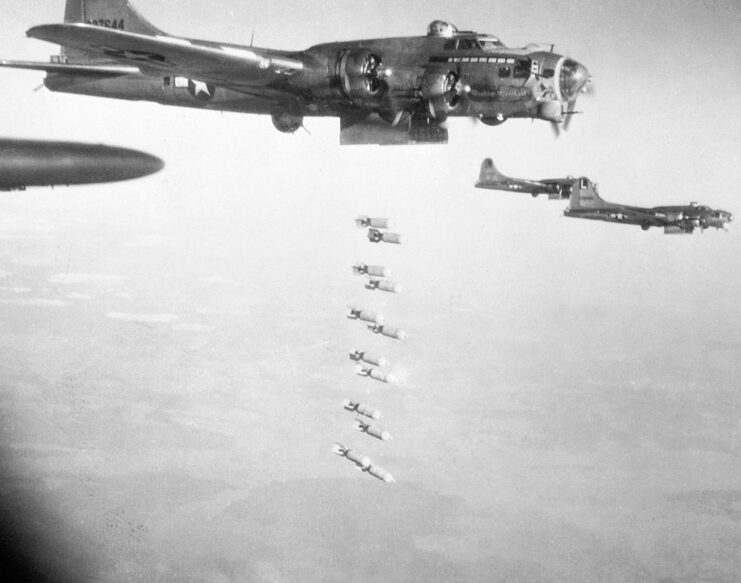
Despite the desperate situation, things were about to take a turn for the worse. Before Eugene Moran could respond, German flak struck Rikki Tikki Tavi, tearing it apart. The tail section, just ahead of the vertical and horizontal stabilizers, managed to remain intact. Moran attempted to open a hatch to escape, but it was jammed.
Fortunately, the tail section descended less violently than the rest of the B-17, allowing it to glide with relative smoothness.
Eugene Moran fought until the very end
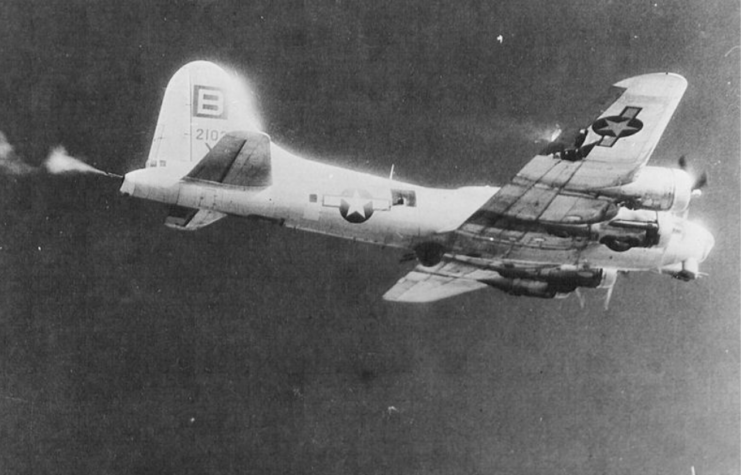
For most people, survival would have been their first priority. With that out of his hands, Eugene Moran continued to fight until he reached the ground. He fired his two M2 Browning machine guns at the Luftwaffe-flown Messerschmitt Bf-109s that continued to attack him. Seeing a seemingly unknown aircraft above, the German flack batteries also continued firing at Moran.
A few moments later, the tail section of Rikki Tikki Tavi glided down to earth, stopping abruptly when it flew into a tree. Moran was alive, but badly injured. He was bloodied and had a cracked skull from when his head was thrown against his machine guns upon impact. He’d also sustained broken ribs and forearms. Moran was attended to by two Serbian prisoners of war (POW), who were doctors. They’d seen the crash and rushed to help.
Surviving his time as a prisoner of war (POW)
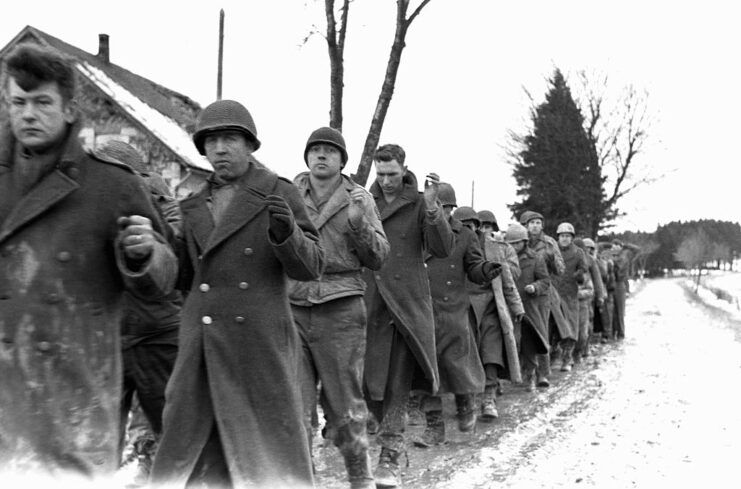
Although Eugene Moran eventually recovered from his injuries, his challenges were far from over. During a grueling 17 to 18 months in captivity, he was transferred between several POW camps across Germany, Russia, and Poland. Between February and April of 1945, he survived a 600-mile march under harsh conditions.
